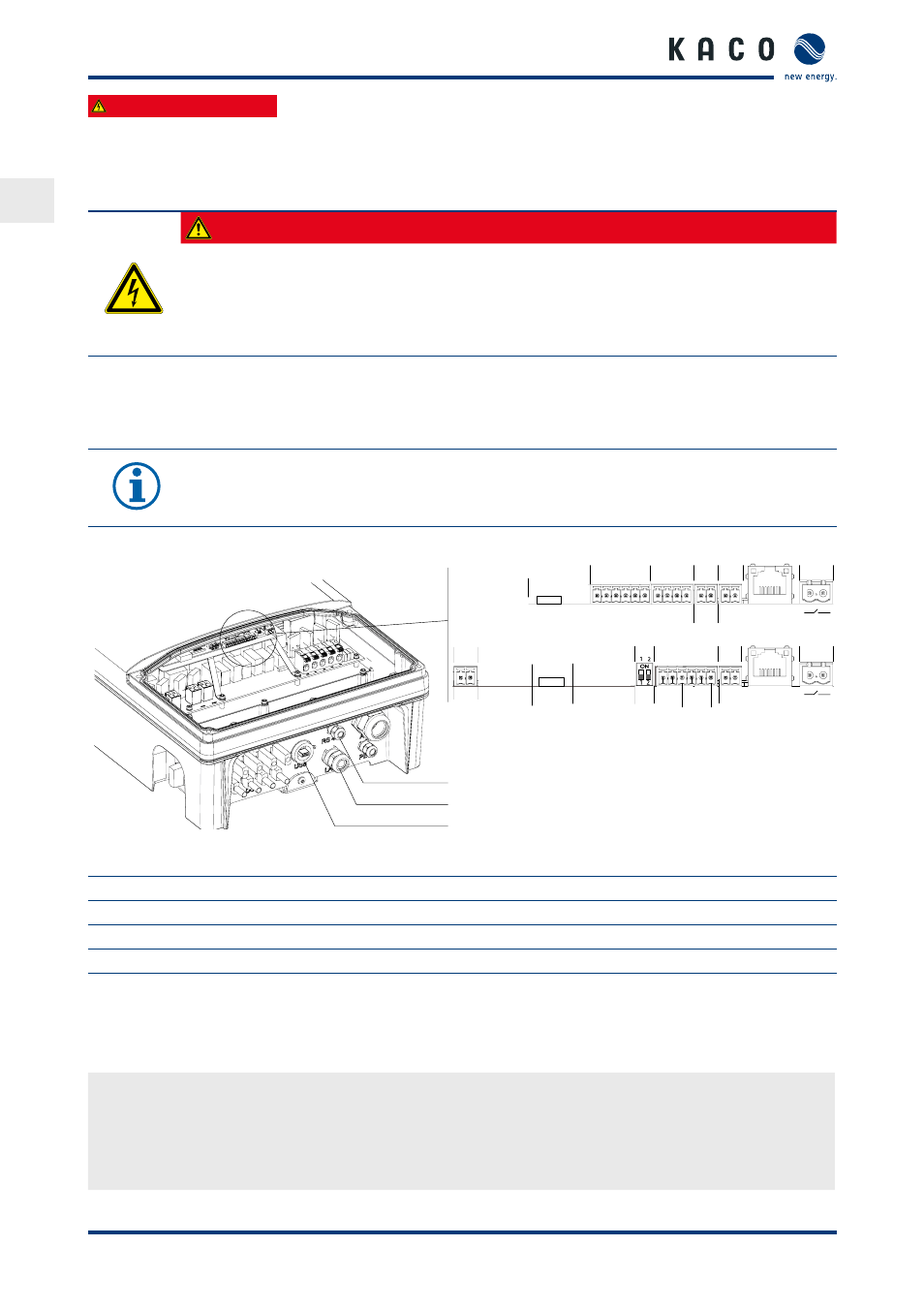3 connecting the interfaces, Connecting the interfaces, 1 determining the inverter version – KACO Powador 10.0 - 20.0 TL3 User Manual
Page 24: 2 connecting the fault signal relay

EN
EN
Installing the inverter
Page 24
Operating Instructions Powador 12.0 TL3-20.0 TL3
Authorised electrician
7.3
Connecting the interfaces
All interfaces are located on the connection circuit board behind the cover for the connection area. Use the cable
fittings and plug connections provided (see Figure 13 on page 24).
DANGER
Risk of fatal injury due to electric shock
Severe injury or death from improper use of the interface connections and non-observance of
protection class III.
›
The SELV circuits (SELV: safety extra low voltage) can only be connected to other SELV circuits with
protection class III.
7.3.1 Determining the inverter version
Check with connection cover open, whether there are on the front of the display board 2 DIP switches on the left
side of the RS485 connectors:
NOTE
When routing the interface connection cable, note that too little clearance to the DC or AC cables can
cause interference during data transfer.
RS485
USB
RS485
USB
DIP
EVU S0
S0
ERR
Ethernet
Ethernet
Relais
EVU
B A
B A
B
A
B
A
GND GND
-+
-+
-+
-+
3
2
1
4
Figure 13: Connection area: Connection and assignment of the interfaces: Above: Version 1. Below: Version 2
Key
1 Cable fitting for RS485 connection cable
4 Interface connections / pin assignment
2 Cable fitting (M25) for Ethernet connection cable
3 USB interface with cover
7.3.2 Connecting the fault signal relay
The contact is designed as an N/O contact and is labelled “ERR” or “Relais” on the circuit board.
Maximum contact load capacity DC: 30 V / 1 A. AC: 250 V/1 A.
Connecting the fault signal relay
1. Unscrew the cable fitting.
2. Thread the connection cables through the cable fitting.
3. Attach the connection cables to the connection terminals.
4. Tighten the cable fitting.
